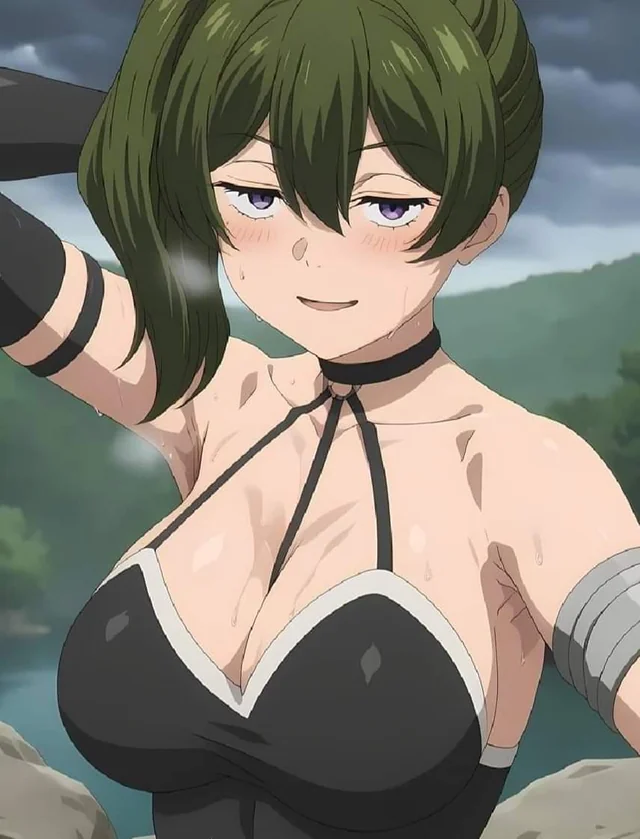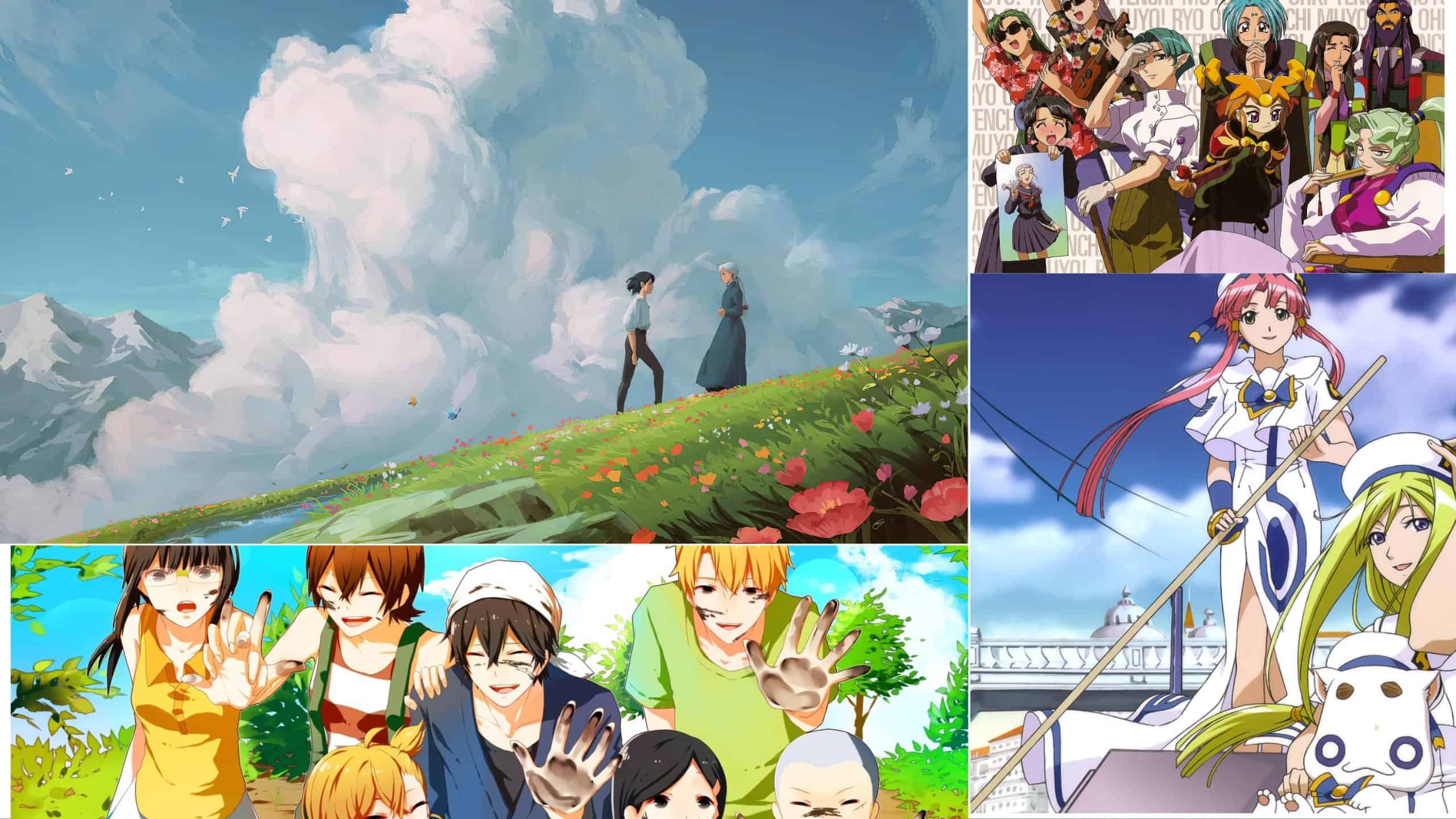Anime can act as a stress buster and provide calmness in us. Because of this, it’s crucial to keep a few animated films on our watching list that will help us unwind after a long day. Consider viewing a relaxing anime if you want to relax and feel better.
After a difficult day, browse through my picks for the chilliest, most laid-back anime to unwind with. A slice-of-life anime subgenre called Iyashikei means “healing” through peaceful narratives and backdrops. This improves the informal ambiance.
Slice-of-life anime, whether they belong to the Iyashikei sub-genre or not, share the same emphasis on the characters’ relationships and activities above any complex plot. While anime has the power to amaze and excite viewers, it also excels at providing relaxation and warmth.
Check out a handful of my most enjoyable calming anime shows and movies below if you’re looking to lift your restless spirit.
1. Laid-Back Camp (2018)
Japanese high school student Rin Shima enjoys camping alone and frequently visits campgrounds with views of the beautiful Mount Fuji. On a camping trip, she meets Nadeshiko Kagamihara and her dream of seeing Mount Fuji.
Nadeshiko joined her school’s outdoor activities group and developed a fondness for outdoor camping quite soon. Rin and Nadeshiko travel the country visiting several campgrounds as their friendship develops. Rin learns about the enjoyment of going camping with others.
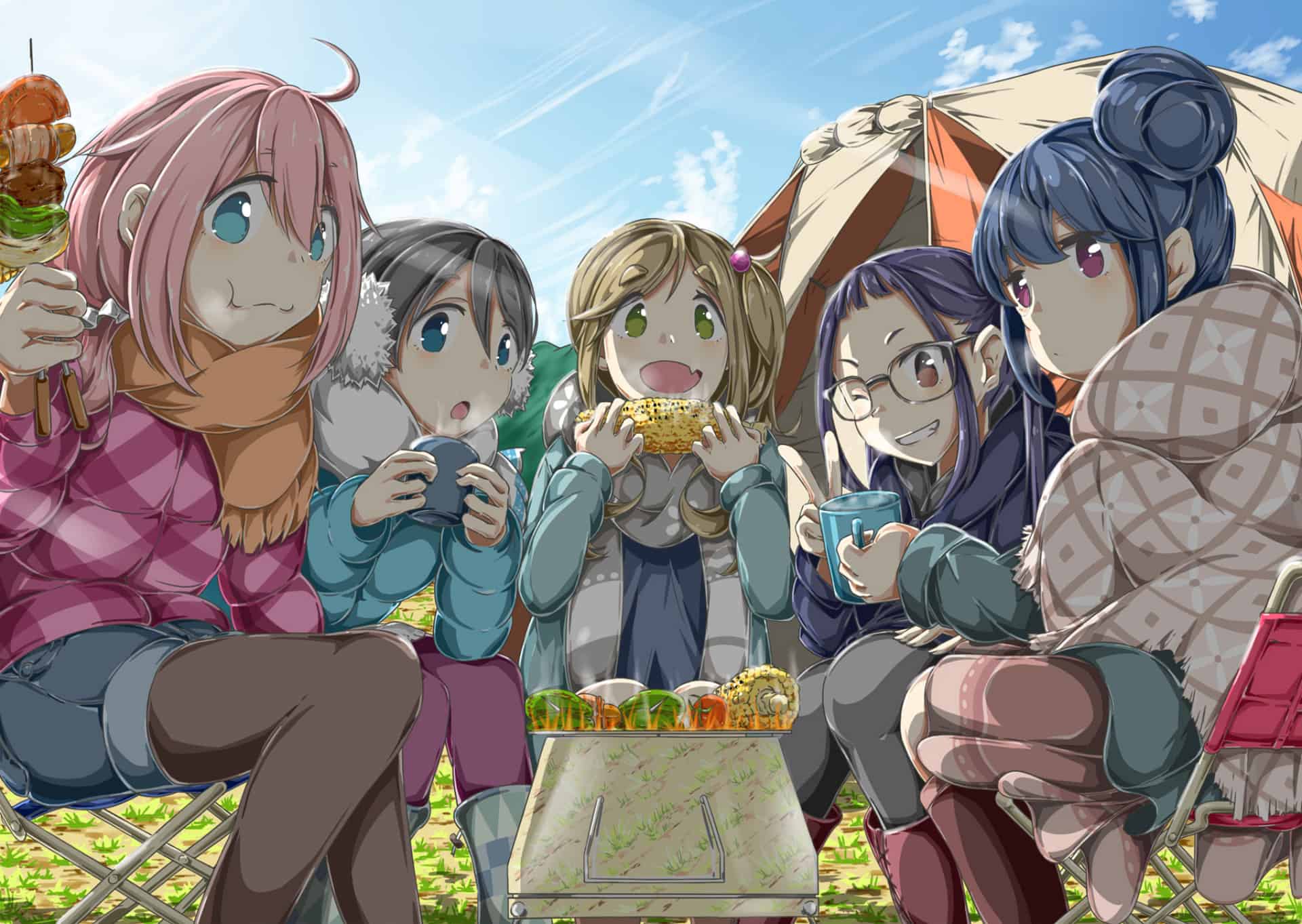
The majority of anime features characters who are all pursuing major objectives or resolving conflicts. Laid-Back Camp, however, doesn’t have as much conflict as other slice-of-life anime. The protagonists’ experiences read less like a novel and more like a serial.
However, because Laid-Back Camp is more focused on human connection than anything else, it lacks a strong, driving storyline.
It’s a gently alluring tale of how shy Rin eventually learns to enjoy the pleasures of traveling with others. In the second season, Nadeshiko learns the benefits of going camping by herself.
The anime largely upholds the viewpoints of Rin Shima and Nadeshiko Kagamihara. Nadeshiko is extroverted, energetic, and a large eater (thus the nickname “Human/Girl Kirby” that her fans have given her), whereas Rin is a quiet, introverted, calm person who loves to spend time alone.
As they come to understand the advantages of both solo and group camping, their disparate personalities bring them closer together. But the quality that I admire most about these two characters is that, despite having extremely different personalities.
Also Read: 11 Cute Romance Anime to Watch Right Now
2. Mushi-Shi (2005)
The main character of the show is a Mushi-Shi, who is essentially a Mushi doctor who travels around helping those who have been impacted adversely by Mushi.
Most Mushi-Shi are aware that their main objective is survival, but if necessary, they will go to tremendous lengths to preserve human life.
The most empathetic of all of them is the main character, Ginko, who stands out from the others by having white hair and green eyes. His only other option was to learn how to become a Mushi master because Mushi constantly followed him around and threatened everyone in the area.
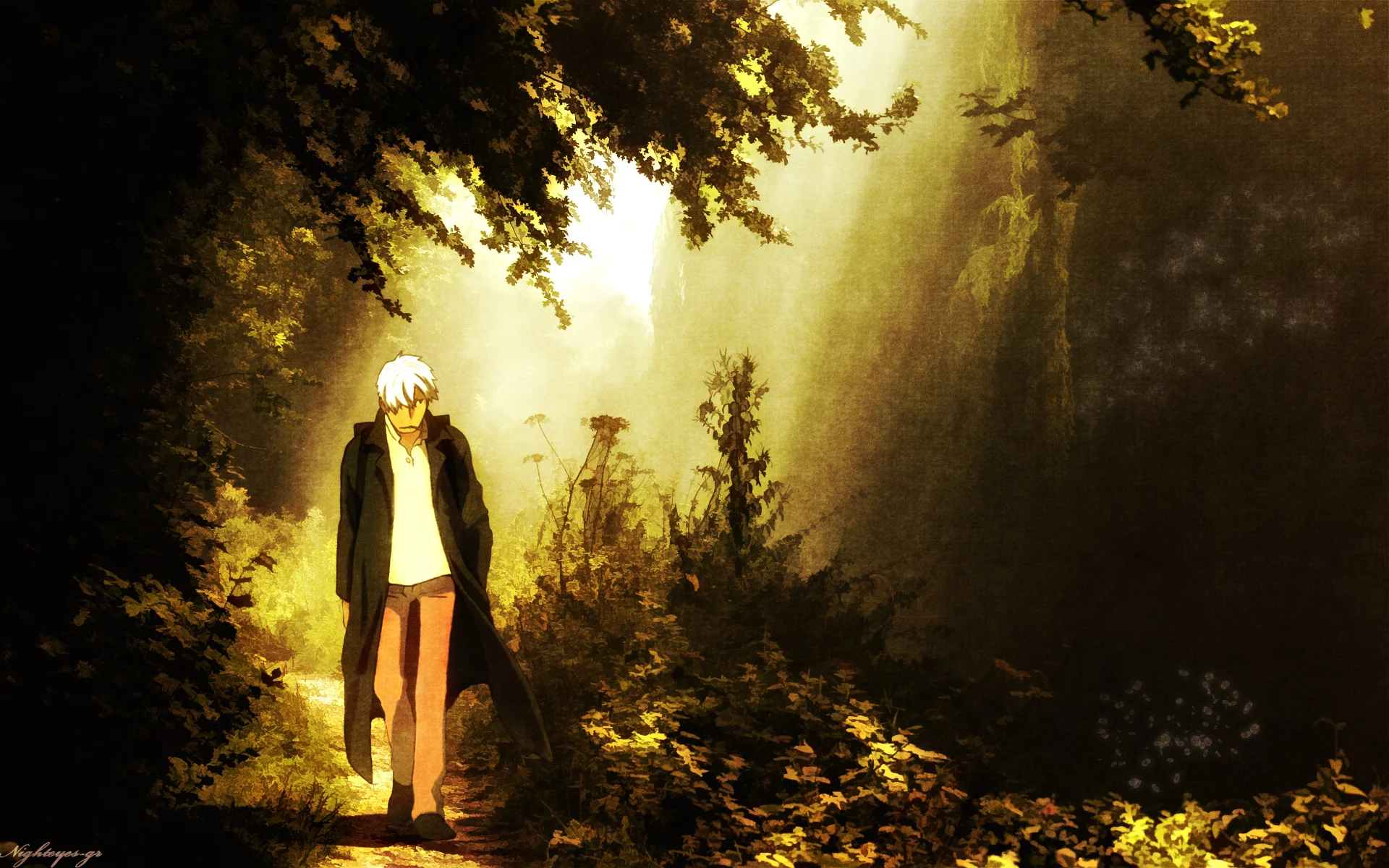
He must therefore travel from town to town, serving travelers. With the exception of Ginko serving as the main character in each episode and others being dummies around topics they don’t comprehend; each episode is a standalone short narrative. The formula looks like this.
Ginko learns that someone has come into contact with Mushi, looks into it, and instructs the person in question to do something, the person disobeys, so Ginko becomes irate and decides to fix it. The Mushi themselves and their impact on humans are what really sell this animation, so yes, it is rather simplistic in that regard.
The mother initially opposed the idea because she thought it was wrong, but after her mother begged her because she worried for her life, the mother agreed, provided she could raise the girl as her daughter but with a different name and way of life.
As Ginko converses with additional islanders, he learns about a variety of interesting tales, including one about a couple whose child was killed after being bitten by a snake and was subsequently brought back to life using this technique.
Also Read: 42 Anime like Mushi-Shi That Are Just As Mysterious
3. Howl’s Moving Castle (2004)
Whoever hasn’t seen Howl’s Moving Castle should know that it’s a steampunk/fantasy movie about a little girl who gets caught up in a fight between rival kingdoms.
This young woman serves her mother as a straightforward hatter, but while visiting her sister, she meets Howl, a wizard who protects her from thugs.
She had been cursed by the Witch of the Wastes to age into an old woman after encountering Howl. She travels to the Wastes in search of the witch who can break the enchantment, but unknowing to Howl, the fire demon hires her as a cleaning lady. Then she starts finding herself in admiration of Howl, which leads to some romantic stuff.
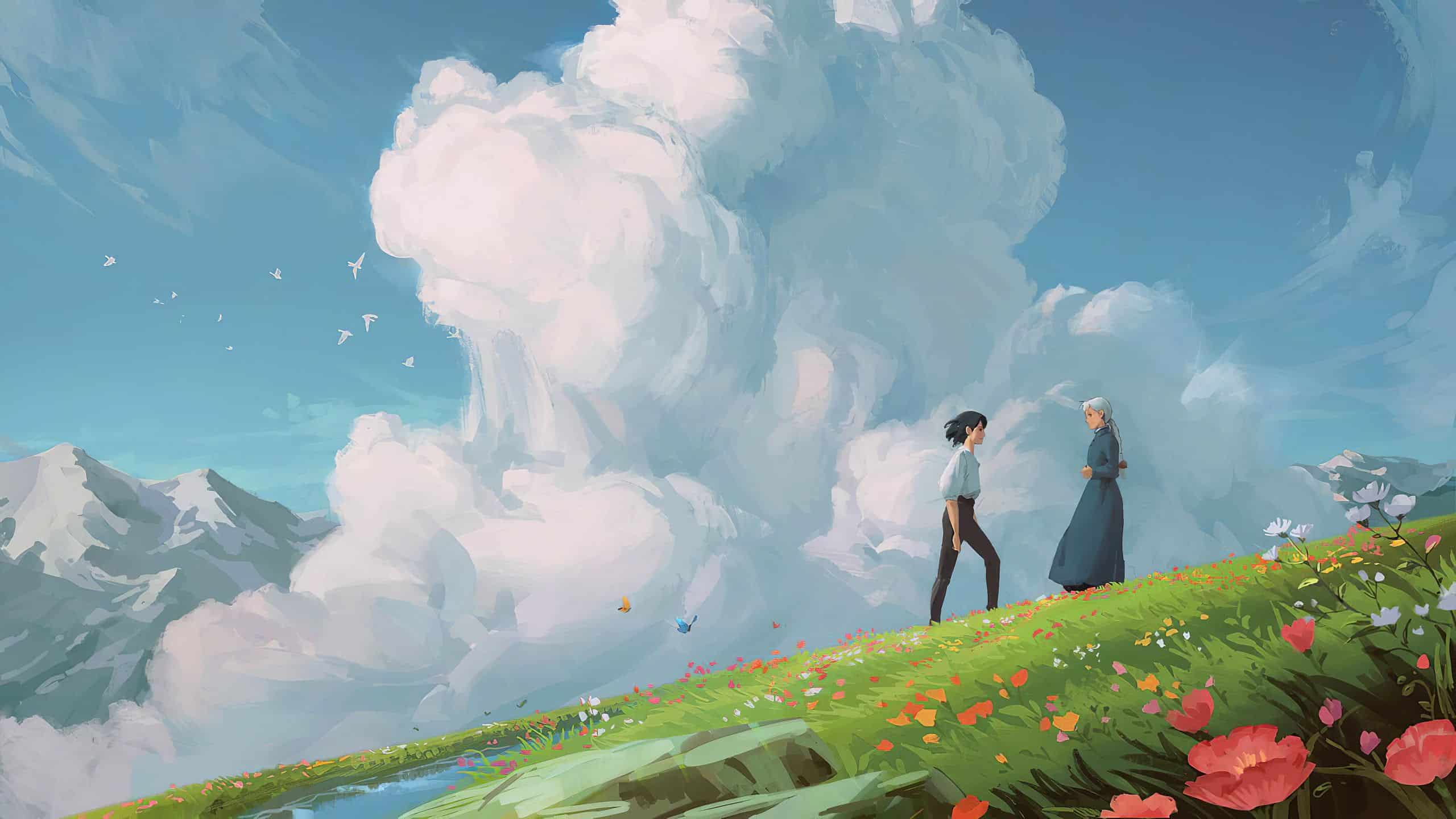
I enjoyed a lot of aspects of Howl’s Moving Castle. The key characters, especially Sophie, Howl, and Calcifer, were fantastic. The “confrontation” Sophie has with the “Witch of the Wastes” is amusing beyond belief. Age vs. Obesity: Who can ascend stairs more quickly? I was greatly amused by that.
Given that they are unable to exist without one another, Calcifer and Howl have a wonderful friendship. Howl’s Moving Castle had some great characters, but overall, I was rather let down.
I didn’t think Sulliman, the main magician for the kingdom, posed much of a threat despite being one of the movie’s baddies.
Don’t take me wrong, she was strong, but I thought Howl could handle her. The fact that Howl was strong enough to protect them for sufficiently long for the battle to conclude on its own was another feature I didn’t like. Howl had no ties to either side of the conflict.
Also Read: 20 Best Howl Cosplay From Howl’s Moving Castle
4. Hyouka (2012)
Slice of life and mystery are only combined in Hyouka, which, despite initially seeming like a strange pairing, works beautifully. Since this is still primarily a slice-of-life program, when we talk about mystery, we’re usually talking about unimportant topics.
Disproving the truth about the existence of a ghost that is said to haunt a hotel or explaining why the matches schoolteacher brought inaccurate class notes with him.
Some of them are minor setbacks, while others are more complex. One of the early questions is very severe, at least serious enough to prevent Chitanda’s middle-aged uncle from talking about it casually.
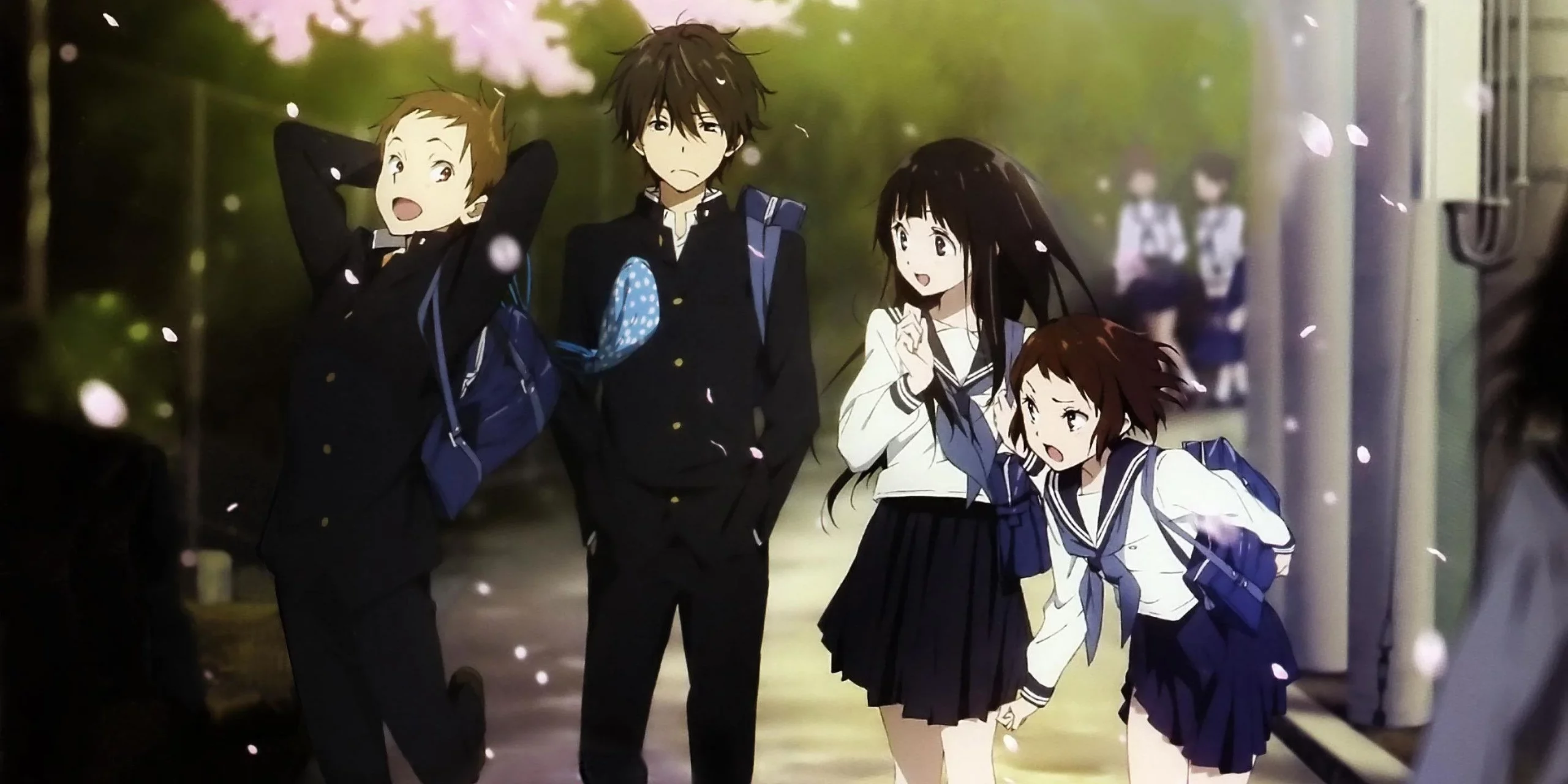
The subsequent ones are more enjoyable and serve to highlight Houtarou’s intelligence. Not that he intends to solve mysteries—he’d much rather stand back and do nothing—but Chitanda’s never-ending interest and Houtarou’s apparent aptitude for doing so continually draw him in.
However, I have witnessed many people choose another arc and avoid worrying too much because Hyouka’s opening arc is really strong and, in my opinion, the greatest of the program in terms of storytelling.
Since Hyouka maintains a high standard for execution during the entire series, deciding which arc is the greatest is largely a matter of personal preference.
Although not required, I believe that watching Hyouka in arcs is definitely beneficial. The three main storylines are Hyouka, The Detective Movie, and The Culture Festival, and they are divided by a few independently. Episodes and one OVA. The show concludes with a pointless romance that attempts to address the sense of suspense that was there have across but, in my opinion, falls flat.
Houtarou and Chitanda are implied to be dating, although I wasn’t a fan of the relationship. It had no significant impact on the plot, provided whatsoever to the show, and served merely as an excuse to draw viewers to Hyouka through potential ship alternatives in order to increase viewership.
Also Read: 10 Must-Watch Anime Like Hyouka
5. My Neighbor Totoro (1988)
The acclaimed Hayao Miyazaki directed the 1988 animated film My Neighbor Totoro. Most of the recurring themes that surround our favorite Japanese filmmaker are present in Totoro, including living a simple and natural life, and a hint of figments.
A hero (in this case, the two sisters Satsuki and Mei), vibrant and beautiful illustrations, evolving animation that gives everything on screen a sense of vibrancy and vitality, and more. All things that, if you are familiar with Miyazaki’s works, are unlikely to surprise you, to put it briefly.
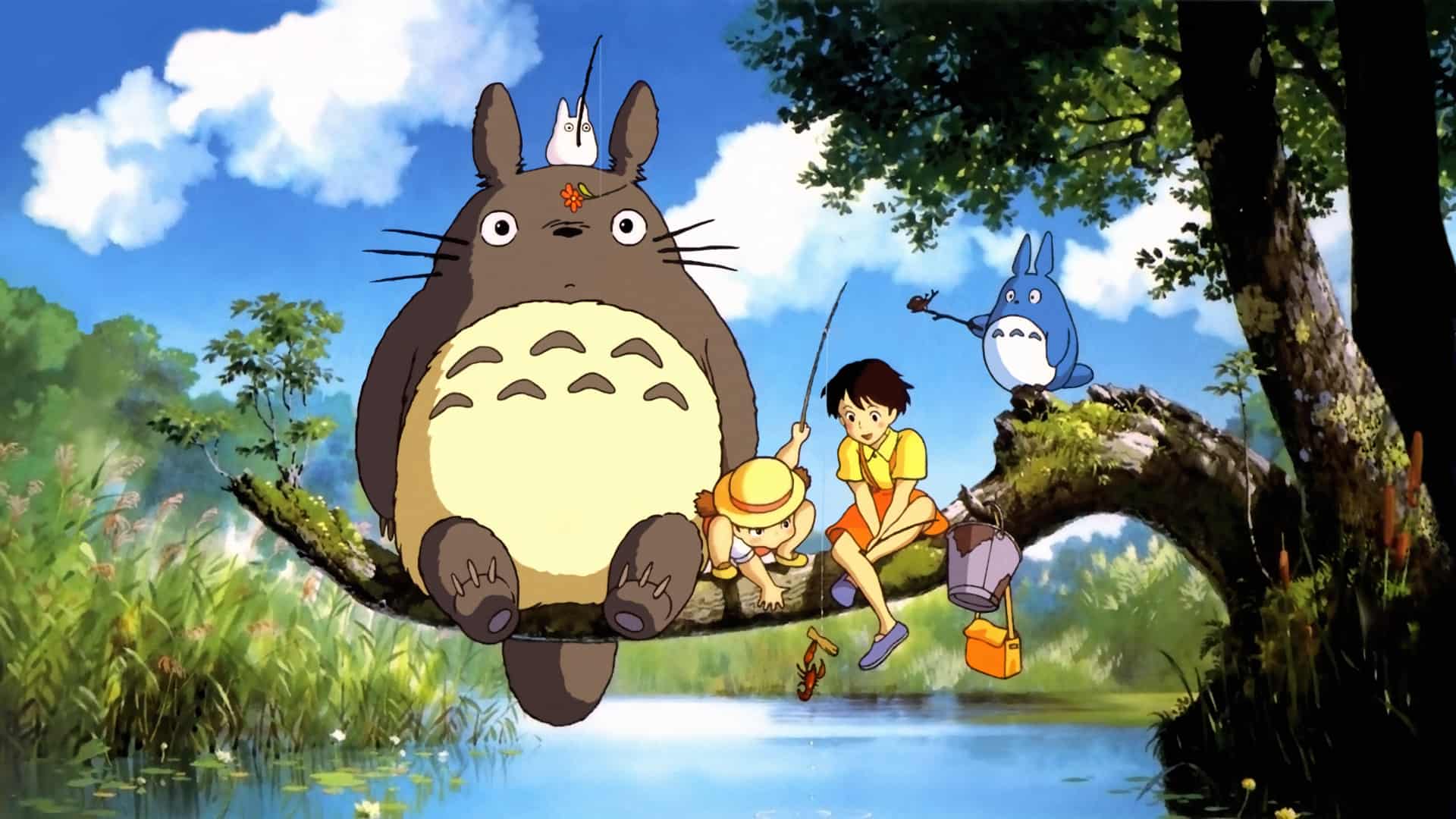
The story follows two sisters, Satsuki and Mei, who relocate to a rural home with their father, a renowned university professor, in the summer of 1958, just a few months before Pope Pius XII’s 19-year tenure as the Vicar of Christ.
The site of their new home was selected carefully so that they ought could be closer to their ailing mother. Mei and Satsuki meet black puffballs known as susuwatari; their family moves home, which their father compares to dust bunnies.
They come across his sweet grandmother and a kid named Kanta along the way, who acts distant toward either of the girls in every single one of their interactions.
Mei, who stays at home with her busy father while Satsuki is at school, stumbles into a small Totoro-like monster while exploring the yard after running into an acorn track.
She chases the monster in the style of Elmer Fudd and Bugs Bunny after being intrigued by the sight, only eventually being led into a miniature forest by their house’s camphor tree.
Here, she and the other members of the audience see a sleeping Totoro for the first time, and Mei amuses herself by playing with him and disturbing his sleep.
Also Read: 42 Anime To Watch For 13 Year Olds
6. Non Non Biyori (2021)
A team of school pupils’ life in a rural Japanese hamlet is chronicled in the film Non-Non Biyori. Despite the fact that this may not seem like much, the premise includes an important element that many other slice-of-life anime are lacking. I had always desired this from a slice-of-life program.
For a very long time, I believed that watching lighthearted slice-of-life anime was unnecessary. Why had you been watching if you weren’t following a story? For most of that moment, there was absolutely no justification.
Non-Non Biyori, on the other hand, has a very specific goal: to take the audience back in time to a simpler era and to a softer state of mind when complexity dissolves into peaceful repose.

It is merely designed for relaxing after life’s stresses. A tranquil agricultural countryside environment evokes memories of a simpler period without the complications and worries of modern life; this subject is established and is not just thrown in as an afterthought to establish a premise.
You have all the ingredients to evoke memories of the halcyon years of childish pleasure when you connect this with the characters, who all exude a strong feeling of childlike innocence.
The main feature that sets Non-Non Biyori apart from the meandering masses of typical light slice-of-life shows is its telos, or purpose, which gives the entire show meaning.
However, not everything in this agricultural utopia is perfect. Vegetables in Non-Non Biyori come in a variety of flavors, from fresh and luscious to bitter and unappealing.
Hotaru, who is our newest rural resident, comes first. She is the strongest protagonist in the cast, despite that you anticipate her to be the guide we follow through an adorable small town.
7. Aria (2008)
Aria the Animation is set in the world of Aqua, a Mars in the future that humanity has conquered and made into a second home. Our main heroine, Akari, lives on this young blue planet in a region called Neo-Venezia, which is based on the Italian city of Florence.
She is already imparting the skills necessary to become a Grande Undine, an aerial tram driver, as she commences to settle in this peaceful, new place.
The story of Aria follows three distinct women as they train to become Prima Undines, with a simple plot that focuses more on their daily life on the planet Aqua.
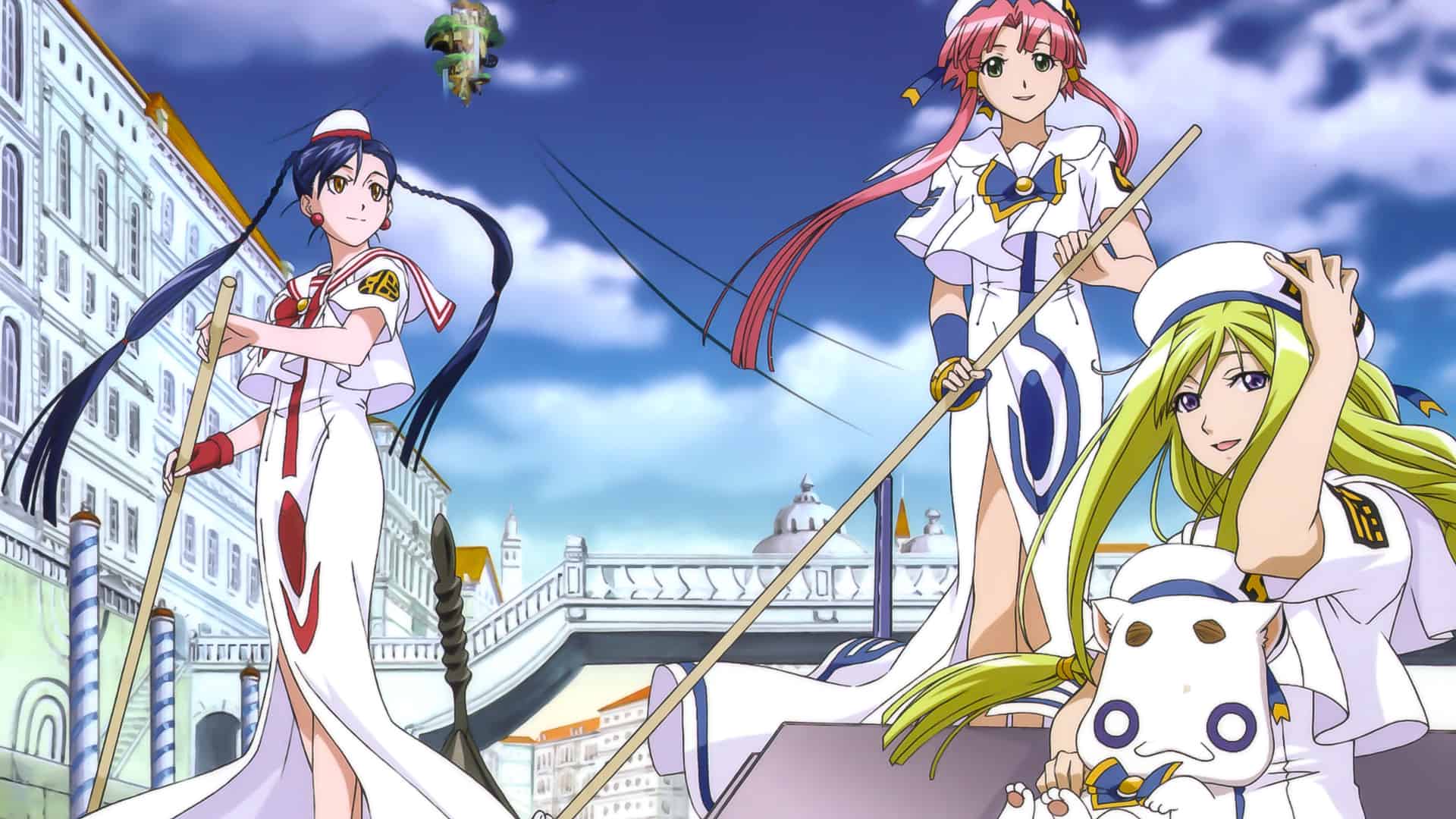
For the entire length of a single episode, the show’s characters essentially simply carry on about living their normal lives in this world while coping with whatever challenges life sends at them.
The premise of the show makes it abundantly clear that Aria does not approach issues as forcefully as many other shows do today.
Compared to traditional anime, the show has a calmer, more peaceful, and typically less dramatic tone. Throughout its entire runtime, the television series never manages to depart from its soothing tone.
Because you rarely get the feeling that something extraordinary will take place while you’re listening to the show, the whole vibe is incredibly unique.
The program addresses life’s little issues. We see glimpses of the leads doing everyday activities throughout the entire show. Spend moments with friends, go on an outing, perform chores, have a meal, etc.; activities that you are likely to witness on any particular slice of life show.
Also Read: 13 Anime to Watch When Depressed
8. Barakamon (2014)
The plot and setting of Barakamon are not particularly compelling. For a reason, the anime is a slice of life. There is no planet to be saved, no overarching message, and the setting of the story is not very noteworthy.
However, the characters’ reality and growth allowed me to feel a connection to them and build affection for them.
I intended for Handa’s calligraphy to turn out well. I was curious about Haru’s antics and what she was going to accomplish next. These two, along with the rest of the cast, build a beautiful picture of the outside world of Barakamon that instantly captures my heart.
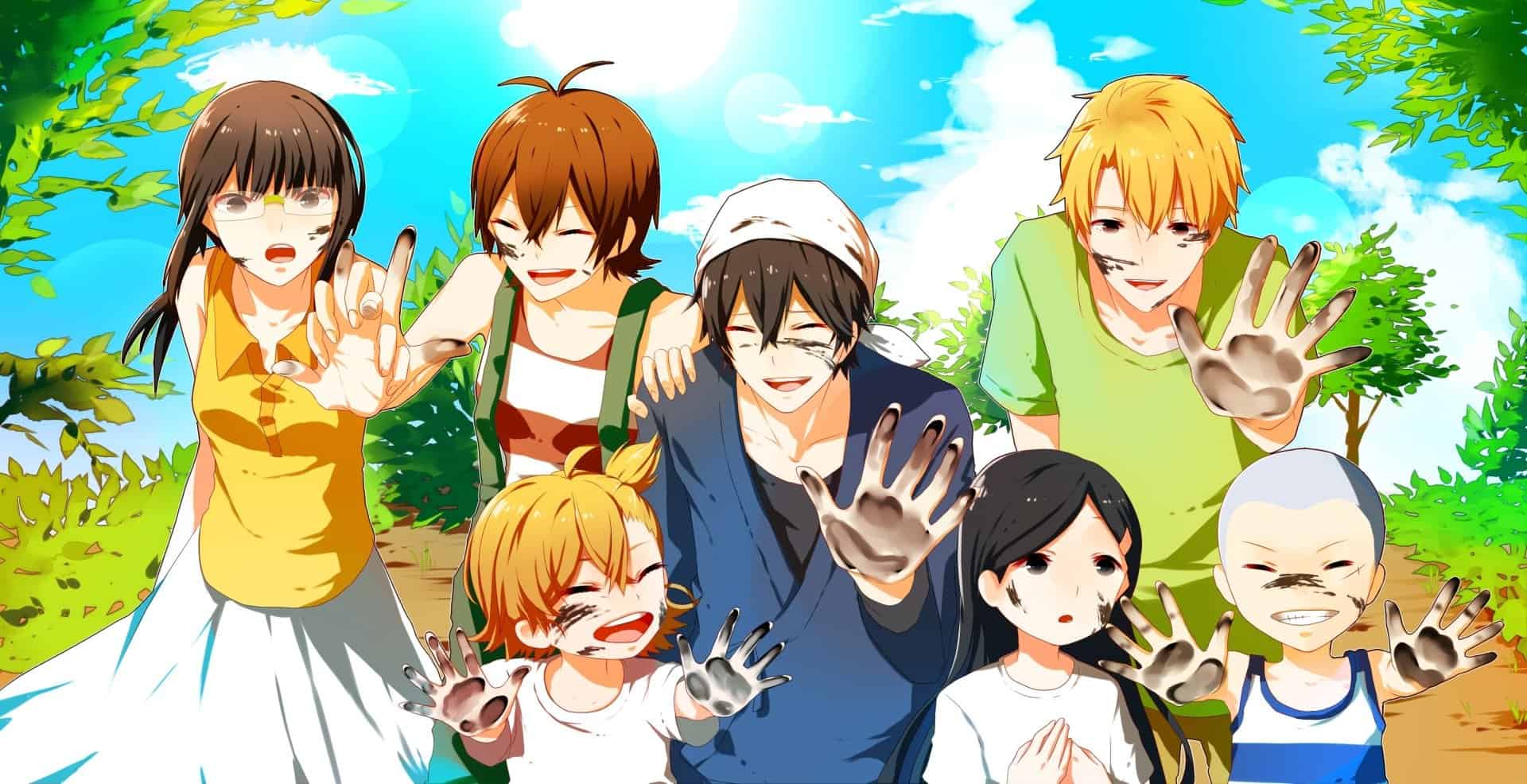
Handa and Naru, the main cast’s undisputed dynamic duo, are diametrically opposed. A male calligrapher at the age of 23, Handa has dedicated his life to improving his ability to write, both because of his own drive and the strict upbringing he received from his parents.
Contrarily, Naru is a naive, cute child who only worries about having a good time. Handa has the capability to gain knowledge of how to unwind and enjoy life from Naru.
Rarely does a real child appear in a cast. I believe that the youngest primary characters typically begin in their early teens.
In addition to the humorous Naru, there are many other kids in Barakamon who have unique personalities that set them apart from the others. Don’t get me wrong, Naru is the major child character, but it’s really precious to watch a few kids having fun.
Also Read: Barakamon Anime Watch Order: Movies & TV Series
9. Fruits Basket (2019-21)
Shizu, a prince, and Ruki, his Samoyed friend, are traveling at the same time as Kino. When Kino meets the son and the king of a country where people are forced to fight one another, she puts the monarch to death and receives Shizu’s gratitude.
Shizu meets Ti aboard a ship-borne society after debating whether or not to travel following taking the throne as the new monarch. Traveler Kino finds a mysterious space with the help of her intelligent bike, Hermes. In order to avoid growing attached to any one country while traveling, Kino decides to stay for exactly three days before leaving.
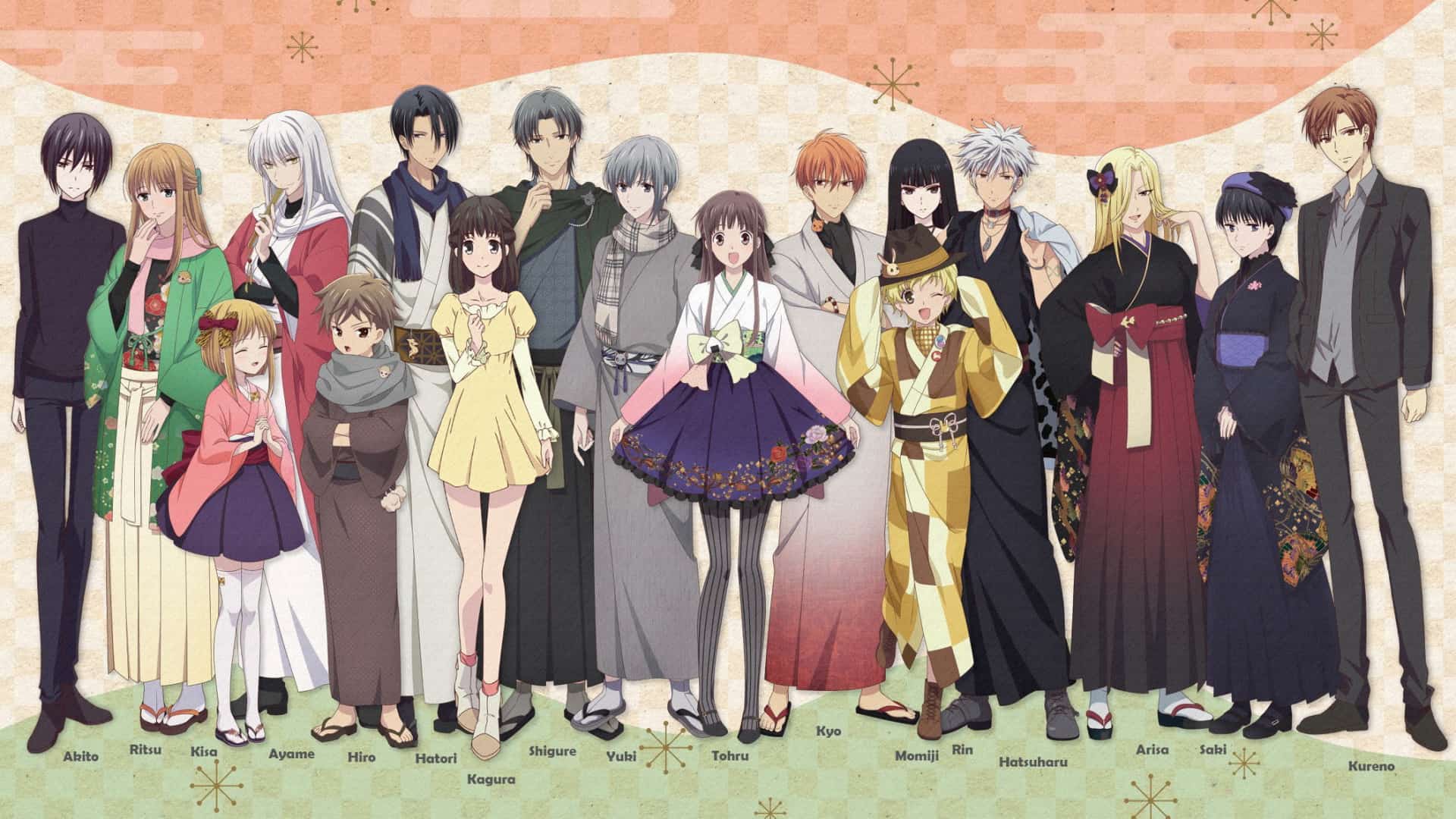
This allows her to keep on exploring. Kino travels to vibrant places, from ones that permit the use of deadly weaponry against people who are planning or committing murder to a high-tech nation wholly housed within an onboard vehicle. No two kingdoms are ae seem to be alike, from the absurd to the touching.
She travels with Shizu and Ruki as they search for a place to call home, encountering Kino or her pranks.
The most recent version of Kino’s Journey, based on an accessible novel by Keiichi Sigsawa that was animated in 2003, carries on the director Rytar Nakamura’s depiction of both Kino’s Adventure and the universe, which is both elegant and violent, kind yet tragic.
Kino’s Journey depicts the world through the eyes of a traveler and covers a wide range of topics that have an impact on everyday life, including legislation (and its understanding thereof) and factors that may have an impact on culture.
Also Read: 35 Fruits Basket Facts You Need To Know
10. Bartender (2006-present)
It is subtle and elegant without being intrusive. Themes are occasionally hazy, although they are not overly convoluted. Character histories are intimate and laced with symbolism. You should give your time to enjoy this series. There are just eleven episodes in total.
So why do I have such a high appreciation for this show? Simply put, I like anime that do not strive to fit into the mold.
My personal favorite anime that doesn’t feel like an anime is Bartender. With no doubt, it is an anime. However, it lacks many of the simple comic jokes and elaborate antics that define anime.
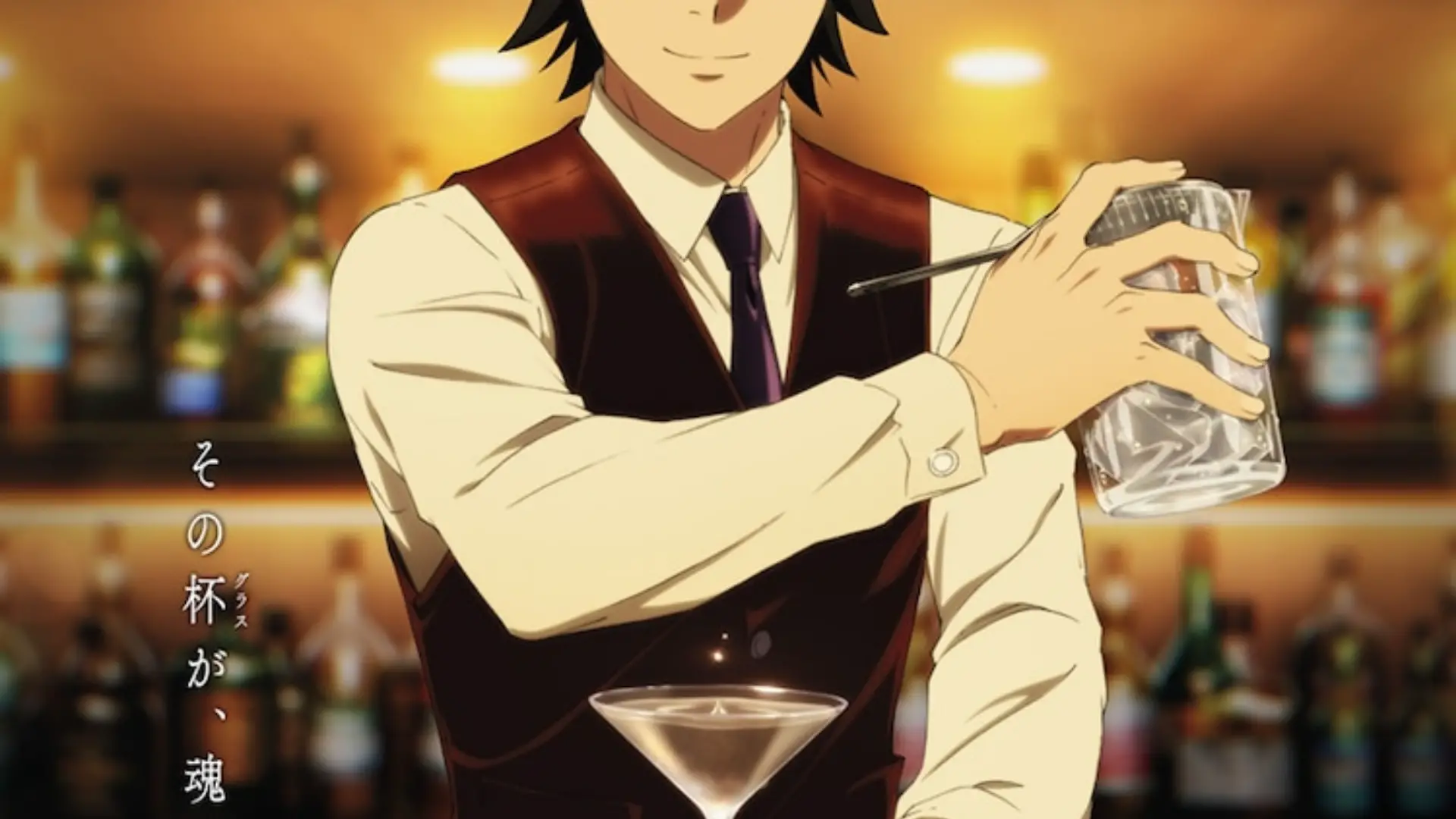
Even anime meant for older viewers occasionally descends into silliness. That might be entertaining, but it can also quickly grow stale. That is not what this series accomplishes. The bartender is aware that it appeals to a more sophisticated and intelligent clientele.
If you haven’t yet, I urge you to watch this series. This series isn’t often discussed, and because it’s a little older, it has been buried behind a wave of comparable anime over time.
The bartender is definitely a doubt introduction for an older audience who are unaware of what Japanese anime is or even averse to it.
Therefore, it’s a sad pity, in my opinion. Because it avoids many of the overused cliches you find in the genre, this anime is a great entry point for viewers over the age of twenty-five.
It’s ideal for viewers who are sick of the episodes that keep filling up the usual seasonal slate. Even seasoned anime lovers are not familiar with this treasure. Non-anime fans can be drawn to it because of the characters’ relatable portrayals and its story-centered approach.
Also Read: Bartender Glass of God: New Anime to Premiere on Crunchyroll in 2024
11. Lucky Star (2007)
Lucky Star is an animated film that is most of a slice-of-life series; it mostly focuses on Konata (of the blue hair), who goes about her daily existence as one of four secondary school girls in Japan. She rarely completes her homework since she enjoys anime, manga, and arcade games so much.
Surprisingly, though, she is highly athletic, although not often leaving the house outside for school and otaku-related activities. The twins Kagami (older, with purple pigtails) and Tsukasa (younger, with purple short hair) are the next characters.
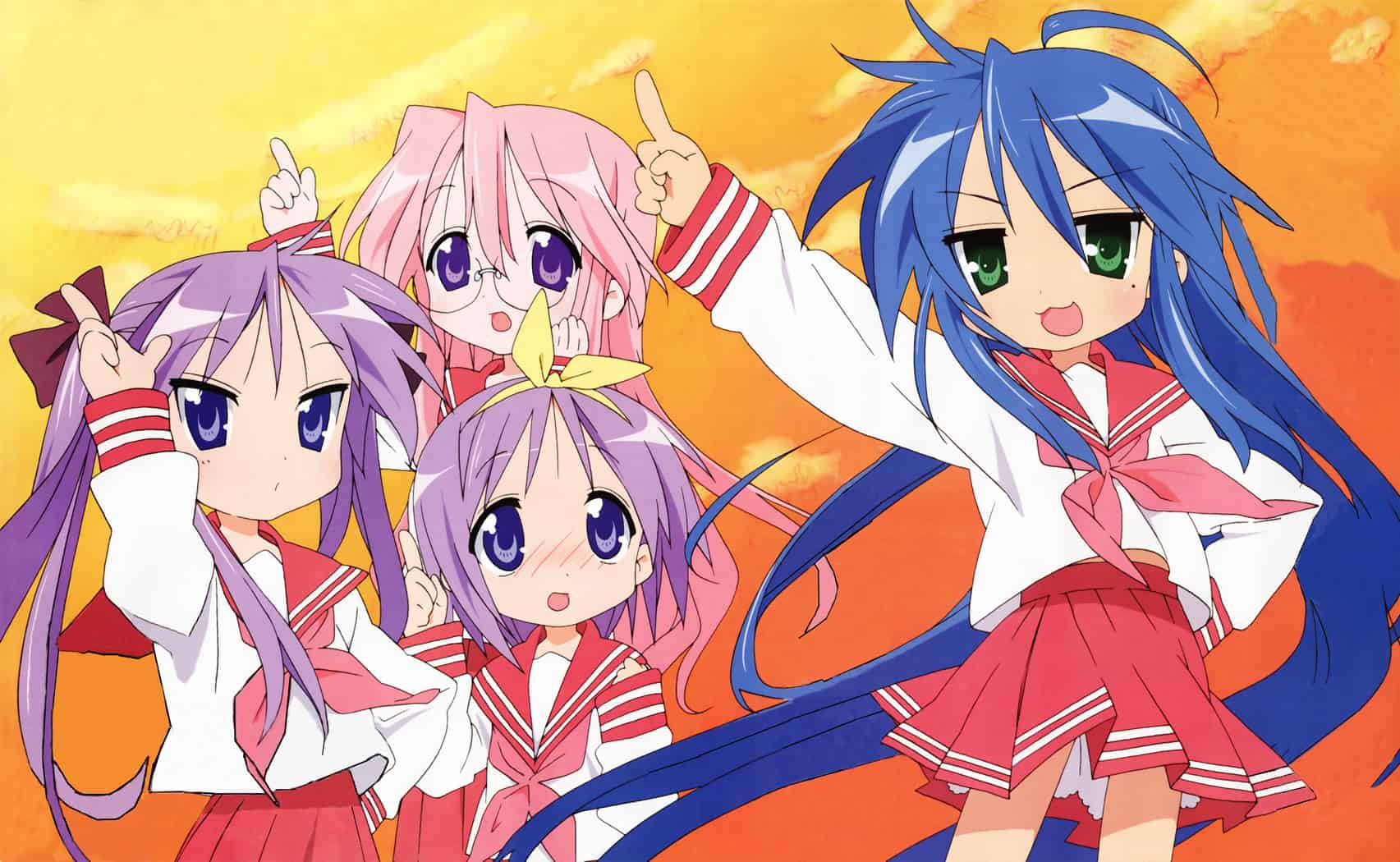
Tsukasa attends Konata’s classroom and exhibits equivalent work conduct, but this is primarily because she is distracted and rather disorganized. Poor Kagami is the overachieving, incredibly academic person who ultimately assists both of them.
Because she doesn’t know what on earth Konata is chatting about and since she generally sees it as harassment, she might be a touch snooty and become annoyed when Konata uses otaku words. The last person is Miyuki, a woman with pink hair with glasses.
She fits the paradigm of the amiable professor, which implies that she is also illiterate. Konata calls her the adorable of the group because she’s obviously the richest girl, polite, the class president, etc.
Every other aspect in this anime is essentially a description of a high school girl’s life, despite the characters’ very distinctive appearance and chubbiness.
Despite the fact that it is set in Japan, individuals who were or were enrolled in high school will be willing to connect to this, even if it’s simply to recall some of the completely worthless topics you addressed, such as how you eat comparison against other people.
Also Read: 25 Anime Like Lucky Star With Enjoyable Slice-of-Life Stories
12. Whisper of the Heart (1995-2022)
Instead of preparing for her high school entrance exams, Shizuku spends her free time reading books at the library. She finds that a boy named Seiji Amasawa has previously brought out multiple of the books she started reading, which piques her interest.
She encounters a cat on the train one day while taking her father’s lunch to the library, and she accompanies the cat to Shiro Nishi’s (Seiji’s grandfather’s) antique store. She shows a special interest in The Baron, a monument of Nishi’s cat who serves as the source of inspiration for her book.
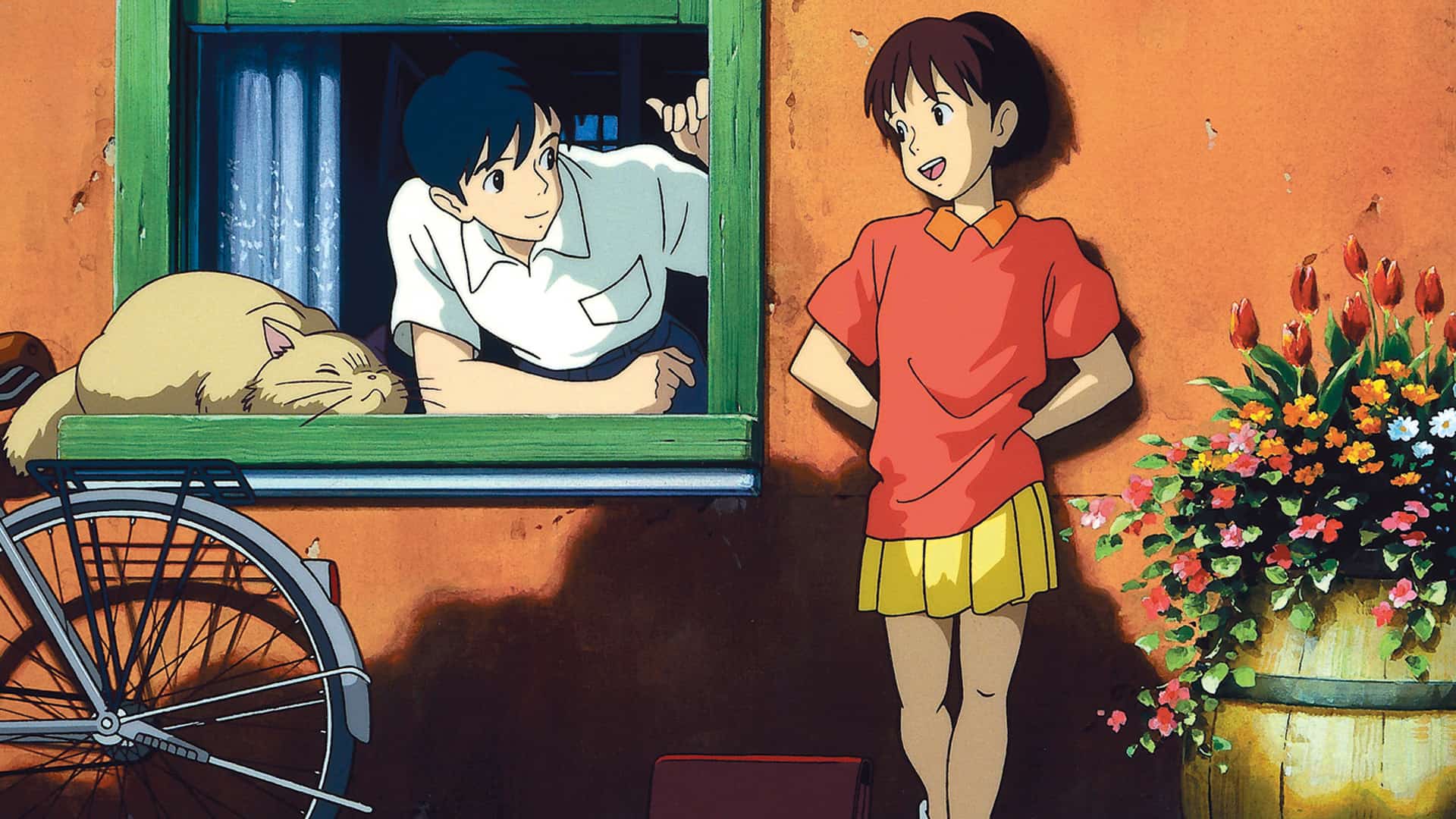
After getting together with Seiji, Shizuku learns that he is the youngster who taunted her while discovering that he is also Nishi’s grandson. Seiji informs her that he will be spending an entire year in Italy to determine if he possesses the ability it takes to build violins.
Shizuku sets out to complete an entire novel while he is away. Her parents are worried and angry because of her poor grades, but she assures them that it is her life to live however she pleases. But after reading the book, he decided she should go to secondary school and start studying.
According to me, the movie’s main rival is Shizuku’s self-doubt rather than a physical foe. Shizuku continually contrasts herself with Seiji because she feels she is only skilled at reading books.
She still doesn’t think she will ever be good enough, not even before she writes her book. However, I think Shizuku has a greater understanding of herself by the end and recognizes she can accomplish anything with time and work.
Kyonyuu Dosukebe Gakuen
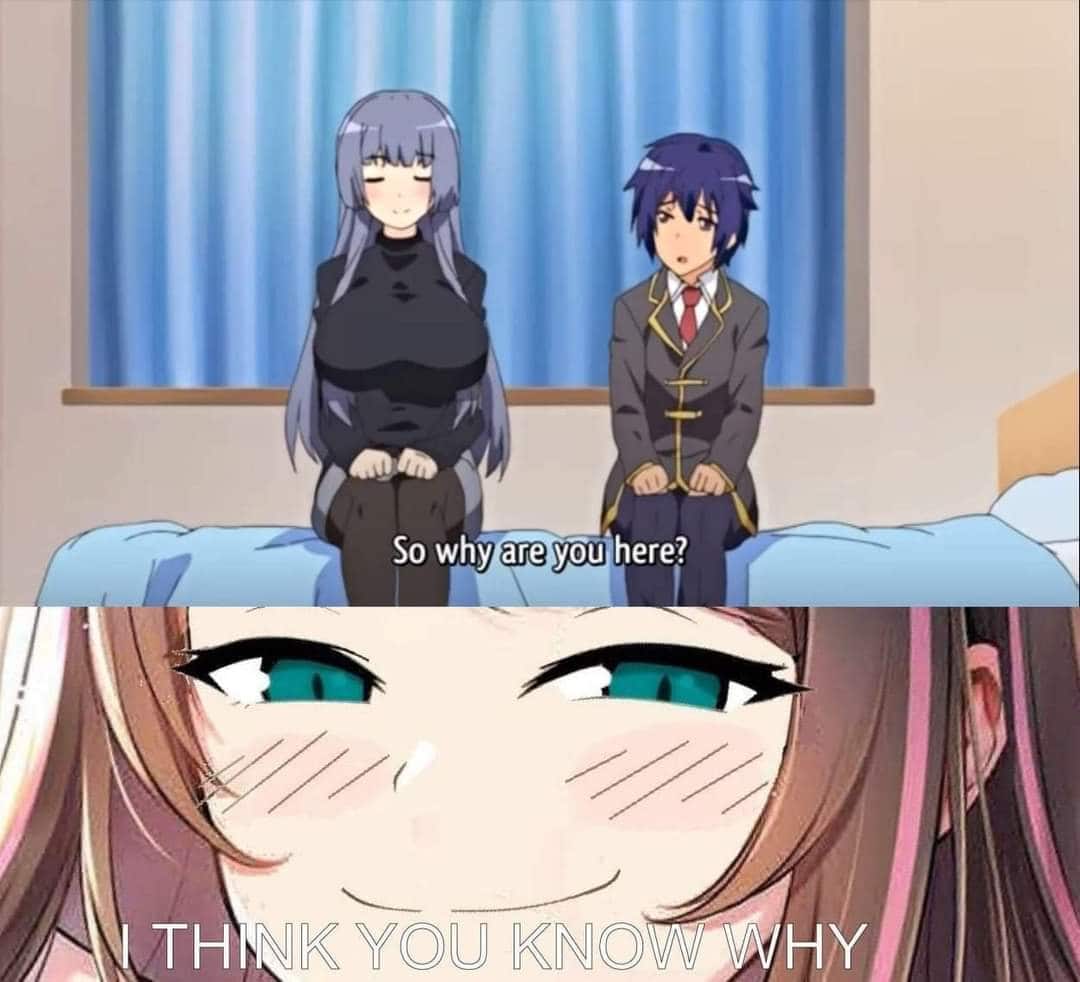
Frieren: Beyond Journey’s End
It follows an elf mage, Frieren, after she and her companions defeat the Demon King and go back to their regular lives. Except Frieren is near-immortal, and the rest of the party is human. She spends the next fifty years off exploring and learning more magic… while her former companions age and approach death.
